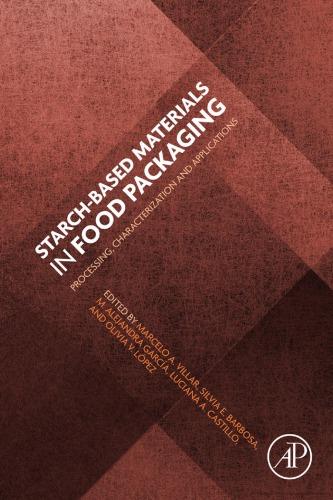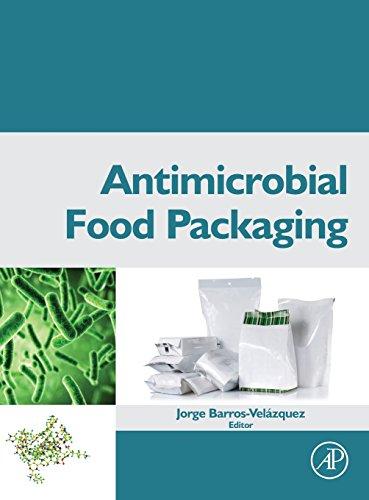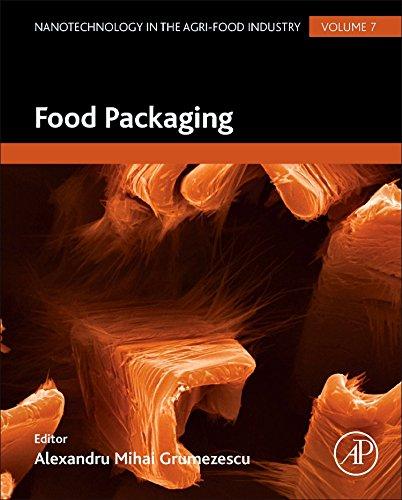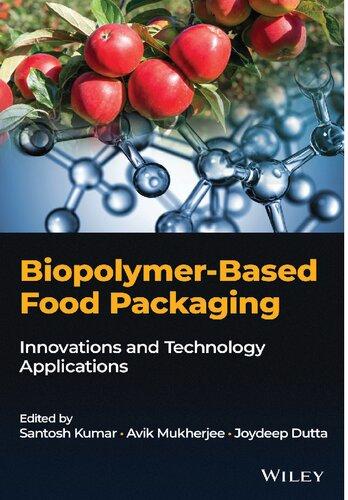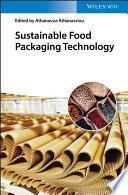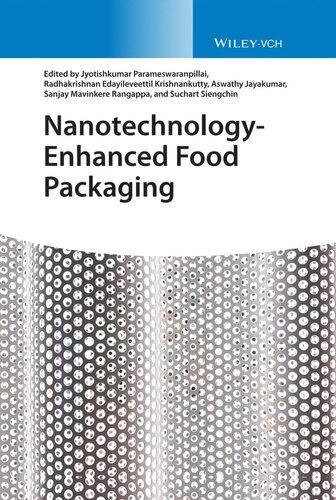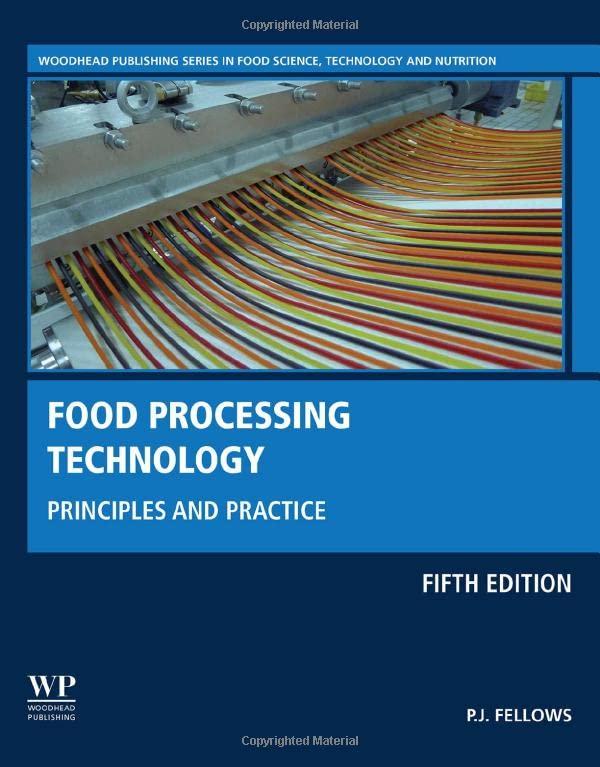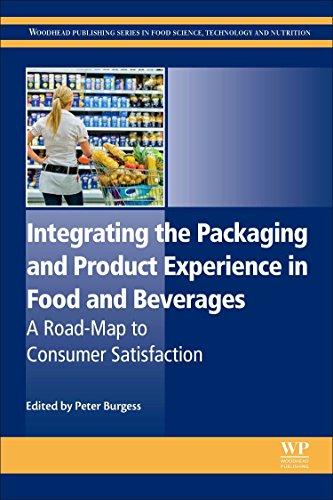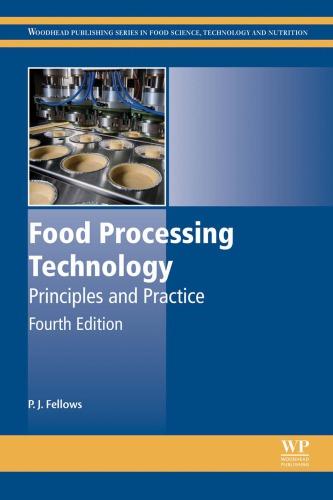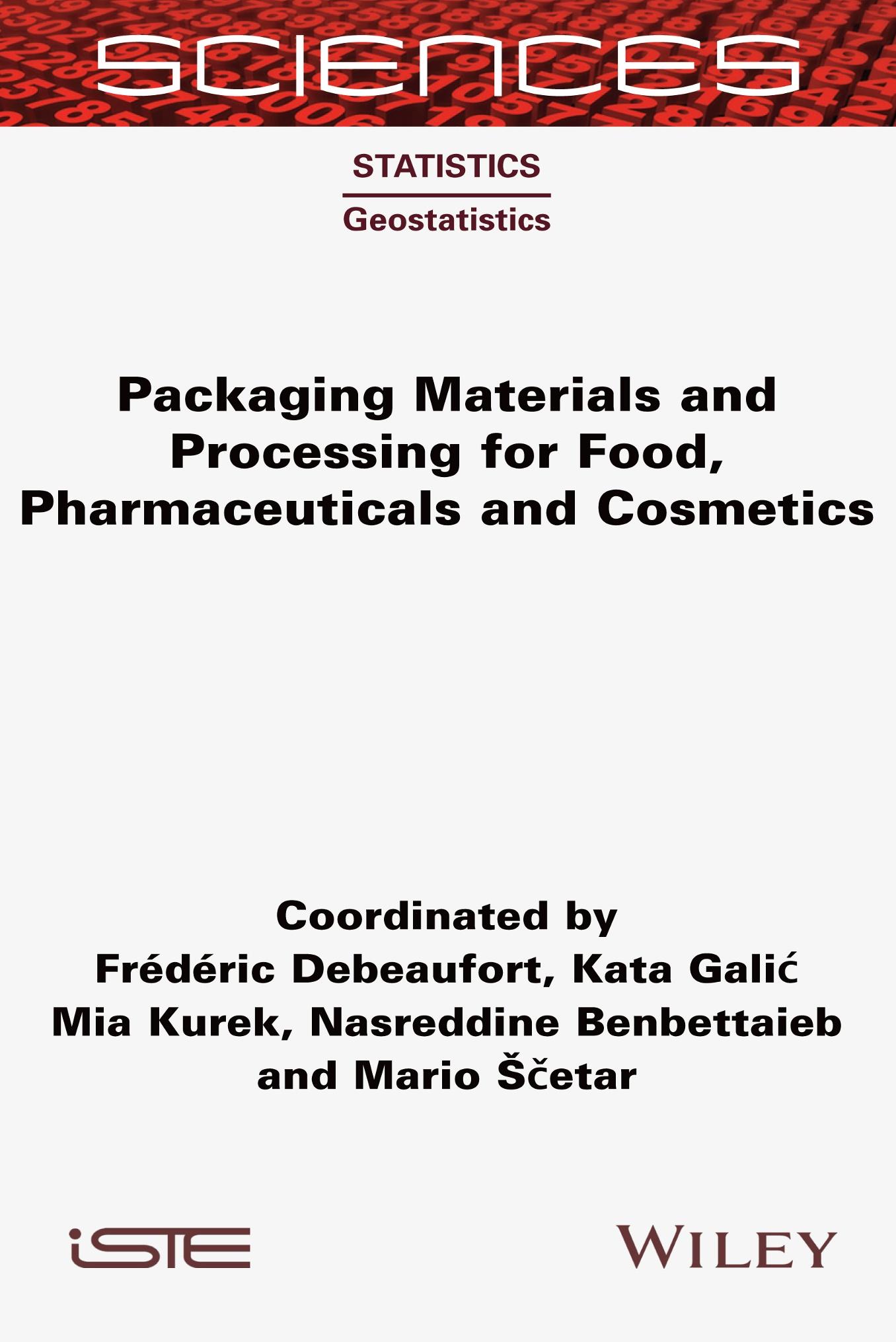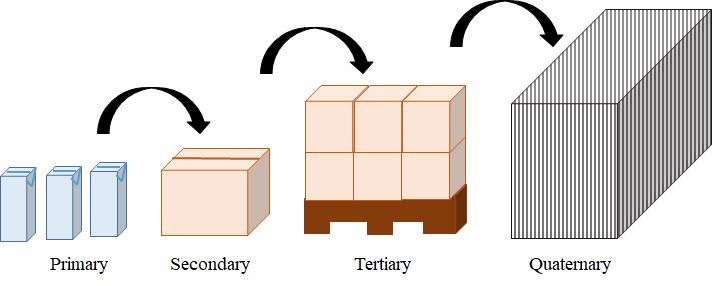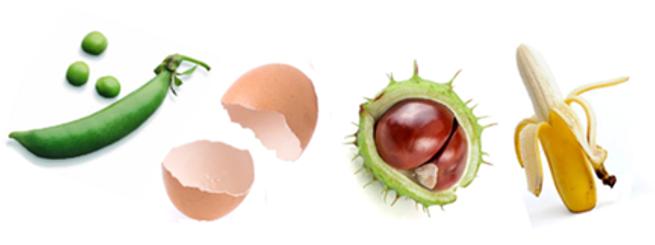Visit to download the full and correct content document: https://ebookmass.com/product/packaging-materials-and-processing-for-food-pharma ceuticals-and-cosmetics-1st-edition-frederic-debeaufort/
More products digital (pdf, epub, mobi) instant download maybe you interests ...
Starch-based materials in food packaging processing, characterization and applications Barbosa
https://ebookmass.com/product/starch-based-materials-in-foodpackaging-processing-characterization-and-applications-barbosa/
Antimicrobial food packaging 1st Edition Jorge BarrosVelazquez
https://ebookmass.com/product/antimicrobial-food-packaging-1stedition-jorge-barros-velazquez/
Nanotechnology in the Agri-Food Industry: Food Packaging 1st Edition Alexandru Grumezescu
https://ebookmass.com/product/nanotechnology-in-the-agri-foodindustry-food-packaging-1st-edition-alexandru-grumezescu/ Biopolymer-Based Food Packaging: Innovations and Technology Santosh Kumar
https://ebookmass.com/product/biopolymer-based-food-packaginginnovations-and-technology-santosh-kumar/
Sustainable Food Packaging Technology Athanassia Athanassiou
https://ebookmass.com/product/sustainable-food-packagingtechnology-athanassia-athanassiou/
Nanotechnology-Enhanced Food Packaging Jyotishkumar Parameswaranpillai
https://ebookmass.com/product/nanotechnology-enhanced-foodpackaging-jyotishkumar-parameswaranpillai/
Food Processing Technology: Principles and Practice
5th Edition P.J. Fellows
https://ebookmass.com/product/food-processing-technologyprinciples-and-practice-5th-edition-p-j-fellows/
Integrating the packaging and product experience in food and beverages : a road-map to consumer satisfaction 1st Edition Burgess
https://ebookmass.com/product/integrating-the-packaging-andproduct-experience-in-food-and-beverages-a-road-map-to-consumersatisfaction-1st-edition-burgess/
Food processing technology: principles and practice
4th ed Edition Peter Fellows
https://ebookmass.com/product/food-processing-technologyprinciples-and-practice-4th-ed-edition-peter-fellows/
Packaging Materials and Processing for Food, Pharmaceuticals and Cosmetics
SCIENCES
Agronomy and Food Science, Field Directors –Jack Legrand and Gilles Trystram
Packaging and Recycling, Subject Head – Frédéric Debeaufort
Packaging Materials and Processing for Food, Pharmaceuticals and Cosmetics
Coordinated by Frédéric Debeaufort Kata Galić Mia Kurek
Apart from any fair dealing for the purposes of research or private study, or criticism or review, as permitted under the Copyright, Designs and Patents Act 1988, this publication may only be reproduced, stored or transmitted, in any form or by any means, with the prior permission in writing of the publishers, or in the case of reprographic reproduction in accordance with the terms and licenses issued by the CLA. Enquiries concerning reproduction outside these terms should be sent to the publishers at the undermentioned address:
ISTE Ltd
John Wiley & Sons, Inc.
27-37 St George’s Road 111 River Street London SW19 4EU Hoboken, NJ 07030 UK USA
www.iste.co.uk
www.wiley.com
© ISTE Ltd 2021
The rights of Frédéric Debeaufort, Kata Galić, Mia Kurek, Nasreddine Benbettaieb and Mario Ščetar to be identified as the authors of this work have been asserted by them in accordance with the Copyright, Designs and Patents Act 1988.
Library of Congress Control Number: 2020951536
British Library Cataloguing-in-Publication Data
A CIP record for this book is available from the British Library
ISBN 978-1-78945-039-2
ERC code:
LS9 Applied Life Sciences, Biotechnology, and Molecular and Biosystems Engineering
LS9_5 Food sciences (including food technology, food safety, nutrition)
Frédéric
and Mario ŠČ
Frédéric
and Mario ŠČ
2.1.
2.2.
2.2.1.
2.2.2.
2.2.3.
2.2.4.
2.2.5.
2.3.2.
2.3.3.
2.4.
2.4.1.
2.6.
2.7.
3.1.
3.3.1.
3.3.2.
3.3.3.
3.3.4.
3.4.
3.5.
3.6.
Chapter 4. Metal
4.1.
4.2. Metal packaging
4.3. Composition and properties: metals and alloys
4.3.1. Steel-based (iron-based) and tin-plated steel materials
4.3.2. Tin-free steel or ECCS (electrolytic chromium oxide-coated steel) materials ...........................
4.3.3.
4.3.4.
4.4.
4.4.1.
4.4.2. Two-piece
4.4.3.
4.5.
4.6.
4.7.
Chapter 5.
5.1.
5.3. Plastic
5.3.1.
5.3.2.
5.4. Properties of
5.4.1.
5.4.2.
5.4.3.
5.5. Plastic
5.6.
5.7.
5.8.
6.1. Introduction
6.2. Multilayer
6.2.1.
6.2.2.
6.2.3.
6.3.
6.3.1.
6.3.2.
6.4.
6.5.
6.6.
7.1.
7.2.
7.2.1.
7.2.2.
7.2.3.
7.3.
7.3.1.
7.3.2.
7.3.3.
7.3.4.
7.4.
7.5.
7.6.
Chapter 8. Active and
8.1.
8.2.
8.2.1.
8.2.2.
8.2.3.
8.3.
8.3.1.
8.3.2.
8.3.3.
8.3.4.
8.3.5.
8.4. Consumer
Chapter 9. Packaging
Kata GALIĆ
9.1. Introduction
9.2. Closure types
9.2.1. Closures to retain
9.2.2. Closures
9.2.3. Closures
9.2.4. Closures to secure contents
9.3. Specialized types of closures
9.3.1. Dispensing
9.3.2. Tamper-evident
9.3.4.
9.4.
Chapter 10. Auxiliary Materials
Mia KUREK and Mario ŠČETAR
10.1.
10.4.
10.5. Interaction
10.5.1.
10.5.2.
10.6.
Chapter
Kata
11.1.
11.2.3. Form-fill-seal
Blister
11.3. Packaging for thermally processed food
11.3.1. Canning
11.3.2. Retortable pouches
11.3.3. Aseptic
11.3.4. Ohmic heating
11.3.5. Infrared treated pre-packaged
Radiofrequency treated pre-packaged
Microwavable
11.4. Packaging for non-thermally processed
11.4.2. Pulsed
11.4.3. Irradiation
11.4.4. Pulsed light
11.5. Packaging with atmosphere
12.1.
12.4. Material and label
12.4.1. Self-adhesive (pressure-sensitive)
12.4.2. In-mold labeling
12.4.3. Sleeves
12.4.4. “Smart” and digital
12.5. References
Introduction to Food Packaging
Frédéric Debeaufort1 and Kata Galić 2
1 Institute of Technology, University of Burgundy, Dijon, France
2 Faculty of Food Technology and Biotechnology, University of Zagreb, Croatia
I.1. Introduction
Packaging is one of the aspects that is part of the daily life of modern companies. It provides many services in support of the product and the various users, whether the packaging company, logisticians, users or consumers. Often disparaged when it is emptied of its contents, the packaging, apparently banal to quote some, is the fruit of human intelligence at the service of all.
Today, packaging is the result of the use of various modern technologies over long development processes (computer-aided design – CAD, 2D/3D digital printing, connected packaging, sustainable packaging and industry 4.0). The packaging world generates sophisticated jobs that require training and learning and schools need to meet this challenge. The packaging industry is “ahead” of many other industries; we are talking about industry 4.0 with high technicality in packaging, its mechanization and its level of robotization, without forgetting the numerous patents filed. Indeed, since 2012, patents filed by the packaging industry (all sectors combined) have represented 2.7% of total patents, that is, twice as much as the economic activity of the sector (1.3%) (CNE 2020). The baby boom and easier access to products,
For a color version of all figures in this book, see www.iste.co.uk/debeaufort/packaging.zip.
Packaging Materials and Processing for Food, Pharmaceuticals and Cosmetics, coordinated by Frédéric DEBEAUFORT, Kata GALIĆ, Mia KUREK, Nasreddine BENBETTAIEB and Mario ŠČETAR. © ISTE Ltd 2021
especially food, thanks to the development of large stores (retailing, supermarkets), have been a source of innovation in terms of packaging materials and machines, in order to mass supply products at the right time and at the lowest cost. The arrival of plastic in the 1960s allowed innovation in the processes for implementing packaging associated with functionalities. The arrival of mass distribution in the 1970s accelerated innovations serving the consumer. The integration of use by the user or the consumer is a source of creativity for the benefit of the population, in particular, for the elderly, if it is easy to open, for example. Finally, the regulations, the quest for traceability and the fight against counterfeiting have made it possible to generate packaging and processes for branding and identification purposes.
The global packaging market consumption in 2020 covers five main materials: paper and boards (31.06%), plastic (flexible 24.85% and rigid 22.28%), metal (12.64%), glass (6.81%) and others (2.35%), with approximately 70% of all packaging used in the food industry (WPO 2008; ALL4PACK 2016). In 2015, the global packaging industry value was US$839 billion and is predicted to reach US$998 billion in 2020 (ALL4PACK 2016). The global packaging machine market should grow at an average annual rate of 4.9% in the coming years, reaching a value of US$42 billion in 2018, US$48 billion in 2020 and an estimated 55 billion in 2025 according to Technavio (2020).
I.2. Definition
The definition of “packaging” in EU Directive 94/62/EC (European Commission 1994) is presented as “all products made of any materials of any nature to be used for the containment, protection, handling, delivery and presentation of goods, from raw materials to processed goods, from the producer to the user or the consumer”.
The International Packaging Institute (in the Glossary of Packaging Terms, 1988) defined packaging as the enclosure of products, items or packages in a wrapped pouch, bag, box, cup, tray, can, tube, bottle or other container to perform one or more of the following functions: containment, protection, preservation, communication, utility and performance (Robertson 2013). Other definitions of packaging include a system that coordinates the preparation of goods for transport, distribution, storage, retailing and end use, a way to ensure its delivery to the consumer in a safe and sound condition. This also includes a techno-commercial function in order to optimize the costs of delivery while maximizing the profits (Coles 2011).
The Glossary of the International Trade Centre (ITC 2020), in the packaging sector, gives the following definitions:
(i) Pack (noun): Bundle of items wrapped up, tied together or otherwise contained for carrying; (ii) Pack (verb): To put items into a box, bundle, bag, bale, wrap, etc. for storage or transportation; (iii) Package (noun): A sealed wrapping or box containing either a retail-sale quantity of a product (consumer package) or a product or a number of items or smaller packages in transport quantities, for transportation and storage (transport package), and (iv) Packaging, the general term for the function, materials and overall concept of a coordinating system of the preparation of goods for handling, shipment, storage and marketing. Distribution and use at optimum cost, and compatible with the requirements of the product.
Thus, packaging serves as a material-handling tool (containing the desired amount of food within a single container or gathering several identical units into aggregates), a processing aid (e.g. sterilization of food products in metal cans) and protection for items from damage and waste, which is an important marketing tool.
I.3. Levels of packaging
Packaging can be distinguished in regard to its “levels” (Figure I.1). A primary package (e.g. metal can, glass bottle and plastic wrap or pouch) is the most important as it is in direct contact with the product, providing the major protective barrier. The primary package is the one that the consumer usually purchases in supermarkets. A secondary package contains different numbers of primary packages, for example, a plastic pouch containing unidose packed sweets or biscuits. A tertiary package, also known as the transport package, is made up of a number of secondary packages that facilitate national and international trade. In other words, it represents the exact number of secondary packages put on a pallet to fill the space most economically. A quaternary package facilitates the handling of tertiary packages and is usually a large metal container (up to 40 m in length) that can accommodate many pallets during transport by ships or trains. When required, the conditions inside the container (temperature, humidity, gas composition and light) can be regulated. Traceability is at the forefront of food safety and is particularly important for perishables such as fresh fruits and vegetables, chilled meats and frozen foods. This also presents the source of innovation of real-time loggers aimed
at delivering real-time distribution chain insights from any location (monitoring in-transit shipments, temperature, security and location details).
I.4. Functions of packaging
Packaging, as an essential element of the product–packaging pair, fulfills various functions, such as the provision of a product to users and consumers, its conservation, its protection and its transport, whether this product is consumed by households, artisans or manufacturers.
Throughout history, packaging has enabled humans to free themselves from both time and space:
– Time, because, thanks to the conservation of a packaged product, humans are no longer obliged to immediately consume what they have just produced.
– Space, because, with the transportability and therefore the availability of the packaged product anywhere, modern humans consume where they want. With packaging, the place of production is separated from the place of consumption.
Four main functions of packaging are thus emphasized: containment, protection, convenience and communication (Figure I.2), which are interrelated, and must all be considered in the package development process (Robertson 2013).
Figure I.1. Levels of packaging
Containment
In order to perform its basic function successfully, the package must contain the product before it is transferred from one place to another. In case this task is not fulfilled (e.g. due to damage of the package), this can result in content spillages, economic losses and, in some cases, serious damage to the environment.
Protection
Product protection is the most important function of packaging. The package must protect the product from any external condition leading to damage (mechanical, poor environmental conditions, contamination and infestation) during handling, distribution and storage.
Thus, packaging is designed to ensure that the product reaches the consumer in good condition, through its entire journey from the manufacturer to the ultimate consumer.
Figure I.2. Packaging functions
Where required, packaging can also provide additional product protection. This is achieved through cushioning using different materials (such as sheets of corrugated paperboard, shredded paper, foam polystyrene or wrappings).
Food safety and quality is ensured through tamper-proof packaging. Special child-resistant closures, on items such as household chemicals (cleaning liquids, detergents, etc.) and pharmaceuticals, are developed to protect this vulnerable population. It is evident that packaging technology has made a huge contribution to improving food science and food safety and the reduction of food spoilage, as well as food waste.
Communication
The expression “a package must protect what it sells and sell what it protects” is applied to all packaging levels, from the primary to quaternary package, helping all involved actors to perform their tasks. Package communication helps consumers to select a product among a number of similar ones, and get all relevant information. It serves as an important marketing and selling tool that often influences the consumer when making their buying choice. It also ensures that warehouses and distribution centers are efficient in carrying and storing secondary and tertiary packages, based on the details on the attached labels. When international trade is involved and different languages are spoken, the use of adequate and clear symbols on the distribution packaging is essential.
Convenience
Convenience characteristics, which are much appreciated by consumers, include those which enable easy access to products, simplify usage or consumption and make it easy to hold, open or reclose. Appropriate packaging levels (secondary, tertiary and quaternary) facilitate the transport of packaged goods in interstate and international trade (Scholderer and Grunert 2005; Robertson 2013).
Packaging materials are often taken for granted as not-so-important actors in food protection. Consumers often do not even think about all of the above-mentioned principal packaging roles, not to mention all of the newly designed special functionalities of packaging materials that the broad population is not familiar with. Packaging is more than just a plastic bag leftover after its use.
I.5. Introduction to packaging materials
Apart from not being toxic, important requirements for food packaging materials also include: a) sanitary protection; b) barrier (moisture, gas, odor, light, fat) protection; c) resistance to impact; d) transparency; e) tamper-proofness; f) ease of opening and reclosing; g) ease of disposal; h) size, shape, weight limitations; i) appearance, printability; j) low cost; and k) special features.
The most common food packaging materials are: plastic (monofilms, laminates), glass, paper and board, metal and wood. Each of these materials offers specific advantages and disadvantages that have to be considered in order to select an adequate material for the specific food product.
Considered as a protective barrier or for carriage purposes, packaging has been known as such and used throughout history, even in Egyptian times. Some of the best examples of packaging can be found in nature, such as chestnuts, egg shells and orange skins (Figure I.3).
It has been found that the first forms of packaging used by humans were flax and banana leaves, and animal products such as leather and stomachs, which are still used today. Some of the packaging-related developments throughout history are presented in Table I.1.
Figure I.3. Packaging in nature
Year
1800–1850s
Package development
1809, Nicolas Appert (France) produced hermetically sealed glass jars to thermally preserve food
1813, In England, handmade cans of “patent preserved meats” were produced 1824, Canned foods were used by the British Navy
1870s 1875, Sardines were first packed in cans 1879, Robert Gair (USA) produced the first machine-made folding carton 1880s 1884, The first cereal was packaged in a folding box (Quaker® Oats)
1890s 1892, William Painter (USA), patented the Crown cap for glass bottles
1900s 1906, Paraffin wax-coated paper milk containers were sold by G.W. Maxwell
1910s 1915, Pure-Pak® filled with milk was commercialized
1920s 1921, Zinc compounds in enamel cans were used 1923, Frozen foods in cartons with wax paper wrappers were commercialized 1930s 1935, American brewers began to sell canned beer 1939, Ethylene was polymerized commercially 1940s 1940, Carbonated soft drink canning began 1946, Saran (PVDC) was used as a moisture barrier
1950s
1950, Cellophane was commercialized and used for packaging 1950, Aluminum foil containers were developed Polypropylene (PP) was invented
The retort pouch for heat-processed foods was developed 1956, Tetra Pak® launched its tetrahedral shape multilayer form for milk
1960s 1960, Easy-open cans were introduced 1965, Beverage cans made from aluminum were introduced 1965, Tin-free steel (TFS chromium) cans were developed 1967, Ring-pull openers were developed for canned drinks
Tetra Pak launched Tetra Brik® Aseptic (TBA) system for UHT milk
The bar code system for retail packaging was introduced (USA)
1970s
1980s
Boil-in-the-bag frozen meals and bag-in-box systems were developed MAP retail packs were introduced (USA, Scandinavia and Europe) 1973, PET bottles were used for colas and other carbonated drinks 1973, Antimicrobial wrappers were used to extend food shelf life 1976, Iron-based O2 scavengers were commercialized
Packaging was produced for microwave use and modified atmosphere packaging (MAP) was developed for ready-to-eat fresh fruits and vegetables 1986, The first use of the terms “Smart packaging” and “Interactive packaging”
1990s 1997, Ethanol-generating films or sachets were patented
Shrink-sleeve plastic labels for glass bottles were used
2006, Nanotechnology was used to modify the internal surface properties of squeezable plastic bottles
2000–2010
2007, The world’s first 100% recycled PET bottle was used for fruit drinks
Polylactic acid (PLA) bottles were used for water
Table I.1. Some developments in packaging during the past 200 years (Coles 2011; Robertson 2013)
I.6. Sociological, psychological and economical aspects of packaging
Packaging strongly influences the consumer’s perception of the packed products, consciously or unconsciously, and thus their consumption behavior and habits. People have different lifestyles, which lead to differences in their perceptions of the products they need. Some people who are trying to have a healthy lifestyle may prefer certain products that are perceived as low fat and calorie restricting, whereas most consumers are mainly influenced by the price, which is related to color and shape attractiveness (Deng and Kahn 2009). Food products and their marketing are everywhere we look, on the way to school or work, on the sports courts, on TV and other media. Looking at shelves filled with various food items, color and product identification originating from the package design have significantly more impact on the choice of the product than its positioning on the shelves. The packaging of fast-moving consumer goods has changed frequently and dramatically for years, especially since the 1960s, as producers have fought for positioning, brand recognition and customer loyalty. In this context, it has become crucial to understand more about how consumers perceive and respond to changes in packaging. Package design and impressions play an important part in consumption patterns, and when consumers’ impressions do not match expectations, disappointment and dissatisfaction may not only have an immediate impact on sales and profitability, but also lead to long-term damage to brand credibility.
I.6.1. Packaging characteristics and consumer behavior
“The clothes do not make the man”. It is by the external appearance that we recognize an object or a person. This expression reflects the significant influence of packaging on stimulating the purchase of a product. Does improving the packaging of a product have an impact on its image? How do you measure the psychological impact of this approach? How strong is the impact of health and nutrition claims? Is there any effect on sales because of it?
The goods have been able to dominate the thoughts of the consumer to influence the act of purchase. Ranging from playful to functional, without forgetting the humorous or tendentious (misguided), the packaging of the product takes on all its finery to seduce the buyer. A determining factor in marketing action, the criteria for choosing product packaging, is of paramount importance for brands. The visual aspect associated with the functional parameters of a product determines the sale. But that is not enough, because it is necessary to play on the psychology of the client.
To succeed in a marketing sector, it is important to study the habits of the consumer, since the goal is to encourage them to buy products. It is not an automatic mechanism beforehand, but it is possible to maneuver so that it becomes one. To achieve this, we must bring together a set of ingredients, each subtler than the next, which interact in the cerebral cortex of the individual, potential consumer. Science has demonstrated this through Pavlov’s conditioning experience (Wells 2014). It is therefore necessary to do some work to arouse the intention to buy. As previously presented, the marketing function of packaging as a communication tool is the key to selling the product.
However, packaging is the first thing consumers see when they are ready to buy a product. It is the last opportunity for the company to communicate about the product it markets. This moment is therefore decisive and deserves special attention. Successful packaging knows how to attract the attention of the consumer in the hubbub that surrounds it and responds, quickly and easily, to questions that arise. In any case, even if the packaging of competing products is adequate, in this context, the consumer will abandon them, for lack of having really seen them.
To attract the attention of the consumer, to retain them and to make them take the product in their hands, the packaging uses several techniques, among which are the color, the images, the typography, the brand, the design and the finish.
The color black is associated with luxury products, white with household products, green with organic or natural products and almost transparent sky blue with water bottles. It can be interesting to break these codes to surprise the consumer. Carbonated water is thus found in red bottles, and do not go unnoticed in a department usually filled with blue bottles.
Images easily convey a message. They do not need to be translated. Sparkling, bright white teeth on a tube of toothpaste immediately speaks to the consumer. It is also the most frequently used technique for products intended for children. This is the reason why brands invest so much in mascots, so that young people can spontaneously associate with a product.
Typography also plays an essential role. For example, elegant typography helps visually reinforce the luxurious character of the product it describes. Typography that resembles handwriting instead gives it an authentic appearance. The labels of some jars of jam are based on this relationship.
The brand and its logo are signs that are immediately recognized by the consumer when they have been the subject of intensive publicity. This is why they appear prominently on packaging. They speak to consumers as much as images.
The design, in other words, the shape of the product offered to consumers, is fundamental to the perception they may have of it, in particular, with regard to its practicality or its playfulness.
The finish adds to the impression given by the product. Varnished, shiny packaging is interpreted as going hand in hand with a quality product. The use of cheap-looking packaging must therefore be clearly explained to the consumer if the product it contains is exceptional.
For instance, the consumer perceptions of packed foods are influenced by the shape and size of the packaging. For example, elongated containers are often seen as larger than equivalent wide and short containers. In addition, people generally underestimate the changes in package volume, especially when packaging changes along two or three spatial dimensions as opposed to just one dimension (Ordabayeva and Chandon 2013). Over the past several decades, people have become accustomed to the supersized packaging in many product categories that reflect a sense of affluence and abundance. The supersizing trend has been especially pronounced in the food industry, where supersized fast food and snack portions have become the norm in many places. However, unforeseen negative side effects are beginning to take their toll. In addition to increased waste disposal issues, supersizing is considered to have contributed to over-consumption, weight gain and a rise in obesity to epidemic proportions. Public health authorities in Western countries have therefore become concerned about the influence of supersizing on consumer health.
I.6.2. Packaging trends
According to McTigue Pierce (2020) from Packaging Digest, future trends for packaging will satisfy both the consumer’s wishes and food industry requirements. That is:
– Sustainable packaging, or even reaching a zero-waste packaging concept, is in preparation, because companies must promote packaging that is both safe for the consumer and respectful to the environment, e.g. recyclable packaging (paper, glass and metal materials, see Chapters 2, 3 and 4, respectively), bio-sourced and biodegradable packaging (bio-based packaging, see Chapter 7).
– Transparency towards consumers, because they demand honesty regarding the composition of food products as well as their containers (additives, endocrine disruptors) and the way they are made. Traditional packaging is reinvented to adopt a clear and precise formulation and, where appropriate, transparent information that reveals what is inside.
– Sophistication, and therefore a visible (marketing) message, refined with bold and simple, but sophisticated, colors and large print to communicate trust and respect (packaging marking and labeling, see Chapter 12).
– Consistency with the brand image of the product.
– State-of-the-art packaging, because consumers love their smart devices, and the increased use of technology, in turn, puts pressure on companies to offer “smart packaging” (active and intelligent packaging, see Chapter 8).
Sustainability, branding and “smart” packaging technologies resonate with global packaging professionals, based on the leading stories from early 2020. For example, using paper-based bags made from recycled paper with a transparent window made from polylactic acid biopolymer film, with an easy handling design and simple print information could satisfy almost all of the previous trends.
Green packaging has become attractive both for consumers and retailers in the past decade and is also in line with increasing consumer awareness of environmental sustainability. Packaging does not only serve to protect the main product, but is also expected to be environmentally friendly to reduce environmental problems due to packaging waste (Auliandri et al. 2018). The purchase intention of young consumers towards green packaging was positively affected by attitude, personal norms and the willingness to pay. The environmental concern positively influenced the purchase intention through the mediation of attitude. According to Kaufmann et al. (2012), the consumers’ green purchasing behavior directly depends on demographic variables (age, gender, income level, education level, ethnicity, occupation), and could also be influenced by sociological/psychological variables such as altruism, environmental awareness, environmental concern and attitude, the belief about product safety for use and availability of product information and product availability, the perceived consumer effectiveness, the collectivism and the transparency/fairness in trade practices (customer care, product adulteration, unfair pricing, black marketing, misleading advertising, deceptive packaging).
The business sector needs to consider green packaging as one of the company’s competitive strategies, as well as a substitute for recycling and waste, but also to the circular economy.
I.6.3. Packaging and the circular economy
Unlike the current linear economy, the circular economy forms a cycle. It is based on a model of reasoned production, of a change in consumption influenced by the population, and seeks to revive products by various means (repairing, recycling

